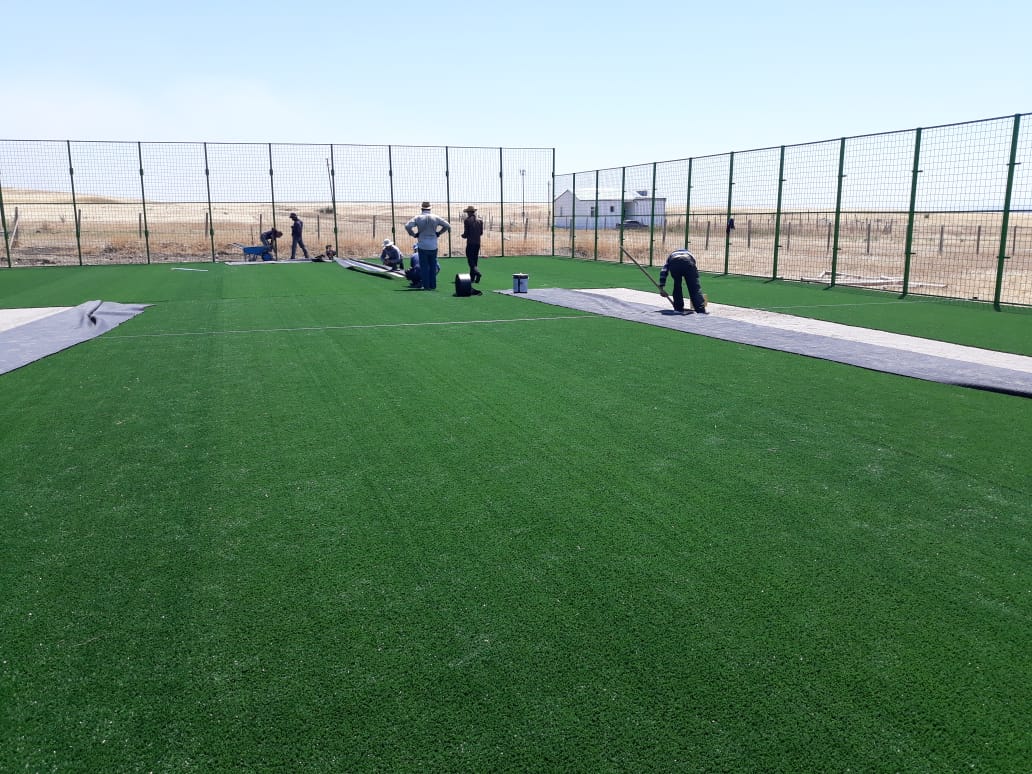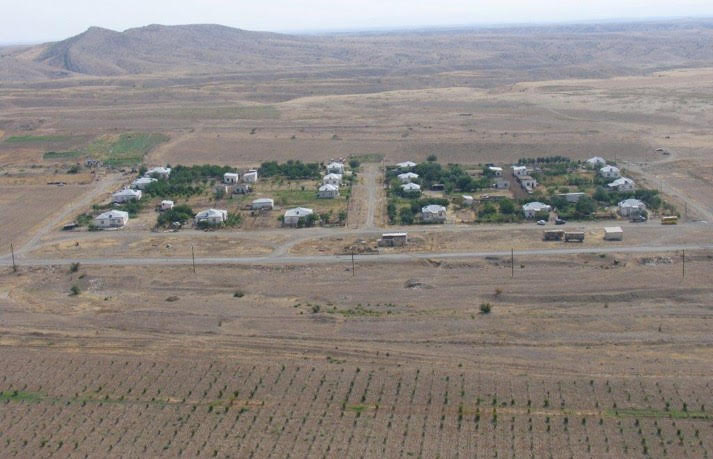
Raffi Killian is based in London and was appointed to the ACAA Artsakh Fund in 2016. He is primarily responsible for project management oversight for the various initiatives of the committee. The following interview was conducted ahead of the opening of Arajamugh’s outdoor sports facility.
Armenian Weekly—The last time we checked in with you, it was back in 2017 following the opening ceremony of the official Arajamugh village expansion—a project the ACAA took on in 2013. It’s barely been seven years, and it seems you are already making a tremendous difference. Do you agree with this assessment? Why or why not?
Raffi Killian—When measuring progress one really has to look at the longer term picture. Although Artsakh Fund was established in 2013, we started construction activities in 2016. Since then we’ve built six new homes, renovated and expanded the school, built a medical clinic and now have finished the sports complex. That is a fair amount of progress, but there’s still a lot more to accomplish, particularly realizing the master plan of the community which allows for another 25 homes, which will double the size of the village. I do believe we’re making a difference, no doubt, but I also see it as incomplete for the moment.
A.W—The border village of Arajamugh is part of a larger and more strategic resettlement effort in Artsakh. Why is this type of civilian presence critical at the moment?
R.K—The establishment and growth of Armenian communities throughout Artsakh, particularly border towns such as Arajamugh, is vital for the long-term security of Artsakh. We need population growth in the region (particularly growth of younger age groups), and we need more economic activity. To be more specific, we are working in the liberated territories – those areas that weren’t part of Stalin’s map, which were incorporated into Artsakh by its defense forces in 1993-94. These territories have enormous value in that they extend Artsakh’s borders to their natural geographic extent (the Arax River), thereby generating distance from Azerbaijani forces while creating new linkages with Armenia, thus making it more defensible. These lands must be retained and thus ‘taken off the negotiating table’ if you will. This becomes achievable by resettling and developing these areas.
A.W—What is the ultimate goal of the ACAA Artaskh Fund?
R.K—Artsakh Fund’s goal is to establish active and sustainable communities in the region where Armenian families can live and thrive for generations to come. Currently our project in Arajamugh is centered around constructing a village; in the future, our programs could include assistance to wounded soldiers, as well as incubating small businesses to promote more robust economic activity in the region.
A.W—Please give our readers a sense of your operations and any challenges you encounter on an ongoing basis as you work towards your goal.
R.K—Artsakh Fund works under the ACAA umbrella, and is comprised of a seven-member committee, based in the Eastern Region USA along with myself currently living in London. The committee is tasked to raise funds for our existing projects, devise the plans for new projects, oversee the activities that are being carried out by our local team in Artsakh, and publicize our activities throughout our region and abroad. Our local team in Artsakh includes a project manager who is responsible for day-to-day activities, and a part-time accountant.
I would say that our biggest challenge at the moment is publicizing our activities. Although there’s always room for improvement, I strongly believe that Artsakh Fund does great work and this needs to be understood and appreciated better by our communities. If we can do a better job of PR, I believe our second biggest challenge, which is fundraising, will fall in place and we could execute bigger projects more frequently in the future.

A.W—What can you tell us about the Arajamugh Village sports complex? Why was this type of venue necessary for the region?
R.K—The Arajamugh sports complex is a newly constructed sports field with bleacher seating, perimeter fencing and water and electricity connections nearby to potentially add shower rooms and lights for nighttime games in the future. The construction is of high-quality western standards. The surface is made of a modern artificial field turf which will ensure ease of maintenance and a long lifespan. The complex will be marked with regulation size soccer, basketball and volleyball fields.
There are no other comparable fields in the area for the youth to play organized sports in a controlled and safe environment. Organized sports for the youth could act as a focal point to help galvanize the local population and build relationships. We are grateful to our chief donors, Ara and Haygo Melkonian of Maryland, who have helped us bring this to fruition.
A.W—What has been the reaction from the local community?
R.K: The local community has always been receptive to Artsakh Fund’s involvement, and the current project is no exception. From the children to the elders of the village, they truly get excited to see diasporan Armenians actively committed to establishing and growing their village. The sports complex project is quite unique as it goes beyond the more basic necessities of the village—homes, school, and medical clinic—which Artsakh Fund had previously been focused on.
A.W—Describe some ways Diasporan Armenians can support your ongoing efforts.
R.K—Certainly donating to Artsakh Fund is a great way to support our efforts, but another simple and lasting contribution is to help in our efforts to spread the word about our projects. Quite simply raising awareness for Arajamugh and the region in general is of the utmost importance.

A.W—What’s next in the pipeline for the Artsakh Eastern USA committee?
R.K—Developing additional homes is atop the list. The village has capacity for another 25 houses, and that will always be one of the priorities, as this drives resettlement which is obviously important. We also need to find ways to bring more economic activity to the region. Given the suitable terrain and soil quality of the area, agricultural projects should also be prioritized as this would provide employment opportunities to the locals. Finally, we are holding discussions about providing tangible assistance to soldiers who have been wounded or disabled as a result of the April 2016 war. We’ll have more details to share this summer.


Living in the UK and fairly au fait with what is going on in the Armenian community I must confess I have not heard or read anything about the Artsakh fund !!!
Have there been any presentations ,publicity via various forms of media ? ..in churches ,community centres ,
Having visited Artsakh three times the last being for a week in May I found the article very interesting …do many UK Armenians read the Armenian weekly ?
Is it possible to show a map in your article where we can see Arachamoogh please?
It’s nice to know exactly where this good village is.
Thanks
Ara